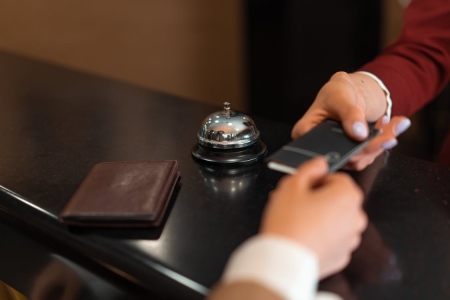Worried about being overcharged overseas? Here’s how to protect your budget
By
Maan
- Replies 0
You’re sitting in a cosy local trattoria in Italy, your tummy full of the best pasta you had ever eaten, and a couple of glasses of wine under your belt.
The waiter came over with an EFTPOS machine for you to pay, and the screen offered you a choice: 'Pay in Euros or Pay in AUD.'
You might have reflexively hit 'AUD' as it was your home currency—but that small decision could cost you hundreds over the course of a trip.
This pop-up is called Dynamic Currency Conversion, and it tripped up many travellers when they were overseas.
If you chose to be charged in AUD, the exchange rate was set by the merchant's bank or processor—and it was almost always unfavourable.
You were likely to pay an extra three per cent to eight per cent on the exchange rate if you chose AUD rather than the local currency.
That could be just a few cents on a cup of espresso, but the more you spent, the more that extra fee added up.
The golden rule for any time you were overseas and paying by card was simple: always choose the local currency.
If you were in Rome, you paid in Euros. If you were in the US, you paid in US dollars. If you were in Thailand, you paid in Baht.
This way, you used your home bank's currency conversion rate, which was much more competitive and transparent—often very close to the market rate.
When withdrawing money from an ATM overseas, you could also be hit by dynamic currency conversion.
ATMs often displayed a 'guaranteed' conversion rate and asked if you wanted to accept it.
Again, this was the local bank setting its own rate, which was rarely to your benefit.
If you declined, you used your own bank's conversion rate, which was likely far lower than the ATM markup—especially if you were withdrawing a significant amount of cash.
When in doubt, remember this: pay in the local currency.
If managing card payments carefully overseas can save you hundreds, it’s also worth considering how everyday spending can quietly spiral out of control.
Maxed-out credit cards are becoming an all-too-common reality, showing just how quickly costs can add up if you’re not careful.
Learning from real-life examples can help you take practical steps to protect your finances.
Read more: Seniors in the red: Over one million Aussies max out credit cards amid cost-of-living crunch

Next time you travel, choosing local currency could save you hundreds—have you ever been caught out by Dynamic Currency Conversion?
The waiter came over with an EFTPOS machine for you to pay, and the screen offered you a choice: 'Pay in Euros or Pay in AUD.'
You might have reflexively hit 'AUD' as it was your home currency—but that small decision could cost you hundreds over the course of a trip.
This pop-up is called Dynamic Currency Conversion, and it tripped up many travellers when they were overseas.
If you chose to be charged in AUD, the exchange rate was set by the merchant's bank or processor—and it was almost always unfavourable.
You were likely to pay an extra three per cent to eight per cent on the exchange rate if you chose AUD rather than the local currency.
That could be just a few cents on a cup of espresso, but the more you spent, the more that extra fee added up.
The golden rule for any time you were overseas and paying by card was simple: always choose the local currency.
If you were in Rome, you paid in Euros. If you were in the US, you paid in US dollars. If you were in Thailand, you paid in Baht.
This way, you used your home bank's currency conversion rate, which was much more competitive and transparent—often very close to the market rate.
When withdrawing money from an ATM overseas, you could also be hit by dynamic currency conversion.
ATMs often displayed a 'guaranteed' conversion rate and asked if you wanted to accept it.
Again, this was the local bank setting its own rate, which was rarely to your benefit.
If you declined, you used your own bank's conversion rate, which was likely far lower than the ATM markup—especially if you were withdrawing a significant amount of cash.
When in doubt, remember this: pay in the local currency.
If managing card payments carefully overseas can save you hundreds, it’s also worth considering how everyday spending can quietly spiral out of control.
Maxed-out credit cards are becoming an all-too-common reality, showing just how quickly costs can add up if you’re not careful.
Learning from real-life examples can help you take practical steps to protect your finances.
Read more: Seniors in the red: Over one million Aussies max out credit cards amid cost-of-living crunch
Key Takeaways
- Dynamic Currency Conversion can add three per cent to eight per cent to your total.
- Paying in AUD overseas is often more expensive than using local currency.
- ATMs may offer unfavourable rates via dynamic conversion prompts.
- Using your home bank's rate is usually cheaper and more transparent.
Next time you travel, choosing local currency could save you hundreds—have you ever been caught out by Dynamic Currency Conversion?








